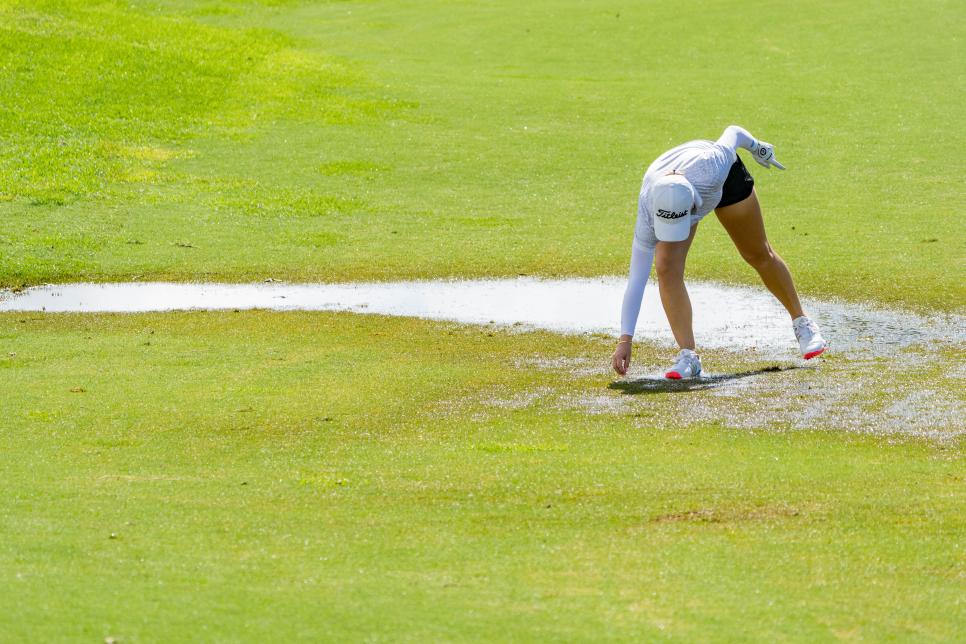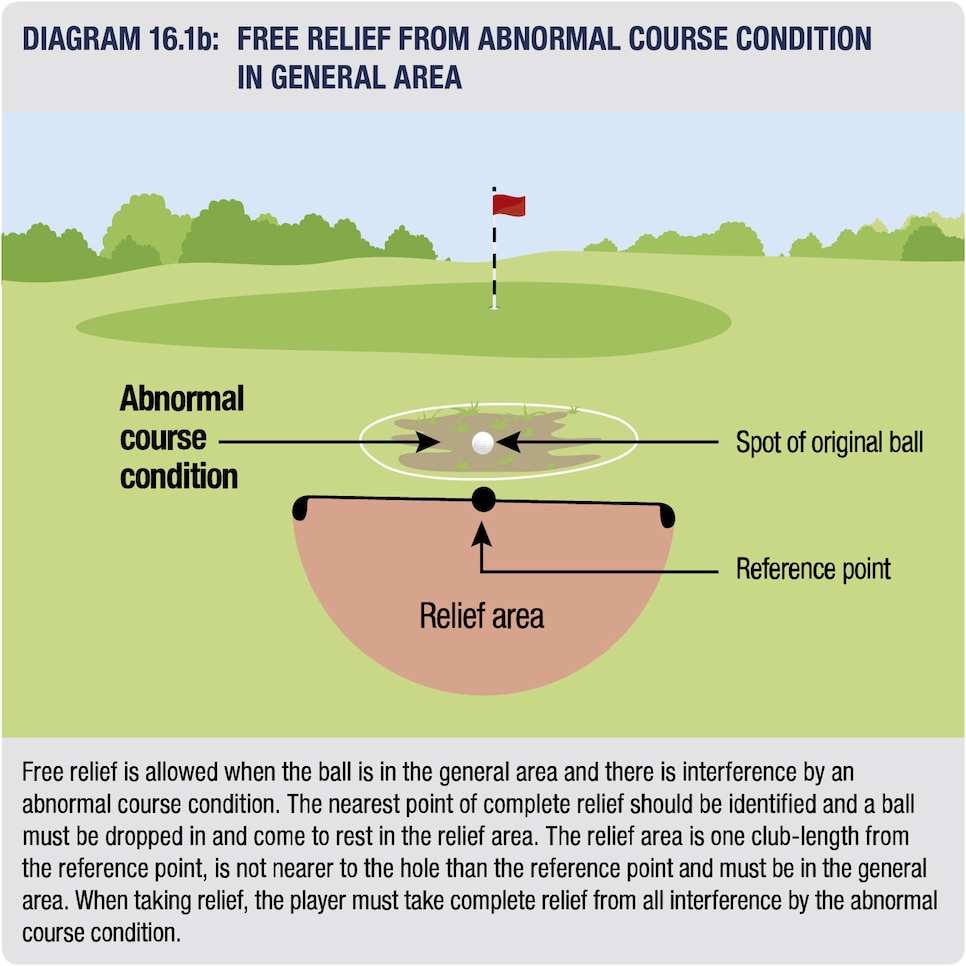Rules of Golf
Rules Review: What is casual water and how do I play around it?

Andy Cheung
Unless you live in Phoenix, San Diego or another always-sunny paradise, chances are it rains on the golf courses you frequent. Depending on the severity of those rains, and the quality of the irrigation system at said courses, there's a chance water can accumulate in certain spots.
In a perfect world, you'd avoid all the wet stuff, precisely placing your drive in the highest and driest part of every fairway. Of course, that's not likely to last, as eventually even a piped drive down the middle will likely find its way into a huge puddle. Thankfully, it’s not a hazard that will cost you a penalty stroke—provided you know the proper way to get yourself out of the soggy situation.
What we’re referring to here is something called "casual water," which can generally be found in low points on the golf course, particularly in bunkers. Causal water is also described as “temporary” water. The more official phrase used in Rules of Golf is "Abnormal Course Conditions" (see Rule 16).
The two basic things to keep in mind if you're ball ends up in casual water, er, Abnormal Course Conditions are, as the Rules of Golf put it, 1) These conditions are not treated as part of the challenge of playing the course, and free relief is generally allowed except in a penalty area, and 2) The player normally takes relief by dropping a ball in a relief area based on the nearest point of complete relief.
This rule covers a number of different Abnormal Course Conditions, including casual water, ground under repair, immovable obstructions, etc. But right now we're focused on casual water and how to proceed when your ball ends up in it, be it in the fairway, rough or bunker. To put it simply, if your ball is in a giant pool of water that isn't in a penalty area, you take free relief at the nearest point of complete relief (a dry area) no closer to the hole, measuring one club-length to create your relief area and play from there. The only instances you are not allowed free relief is if your ball is out of bounds or in a penalty area. One other thing to note: If your ball finds casual water in a bunker, your point of free relief still has to be in the bunker. If you did want to take it out, you'd have to assess yourself a one-stroke penalty.

Graphic courtesy of the USGA
Free relief is also granted if the casual water is affecting your stance. Your ball may be in a perfectly dry spot, but if you take your stance and water begins seeping out of the fairway, you are technically standing in casual water and allowed to take relief at the nearest point of complete relief.
Same goes for casual water on the putting green. If your ball is touching it or it's affecting your stance, you may place a ball at the nearest point of complete relief on the putting green, or in the general area.
You’ll notice we keep saying “complete relief.” That’s not by accident; it’s an important nuance of the rule. You’ll hear announcers mention it during golf broadcasts when players are getting relief from a cart path. To properly take relief, you need to make sure where you’re dropping your ball is not in a place that can still be defined as casual water or that your stance will still be casual water. The Rules of Golf describe it as relief from all interference by the abnormal course condition.
The only situation that seemingly could get a little dicey is if your ball ends up in a rather large pool of casual water, say in a bunker, and you cannot find it. If it is known and virtually certain that the ball is in that pool, the player may take relief using an estimated point of where the ball last crossed the edge of the casual water. Once a new ball is put in play in this situation, the player may no longer play the original ball, even if it is then found before the end of the three-minute search time. If it is not known or virtually certain that the ball came to rest in the casual water, however, the player must play it as a lost ball and take stroke-and-distance relief.


